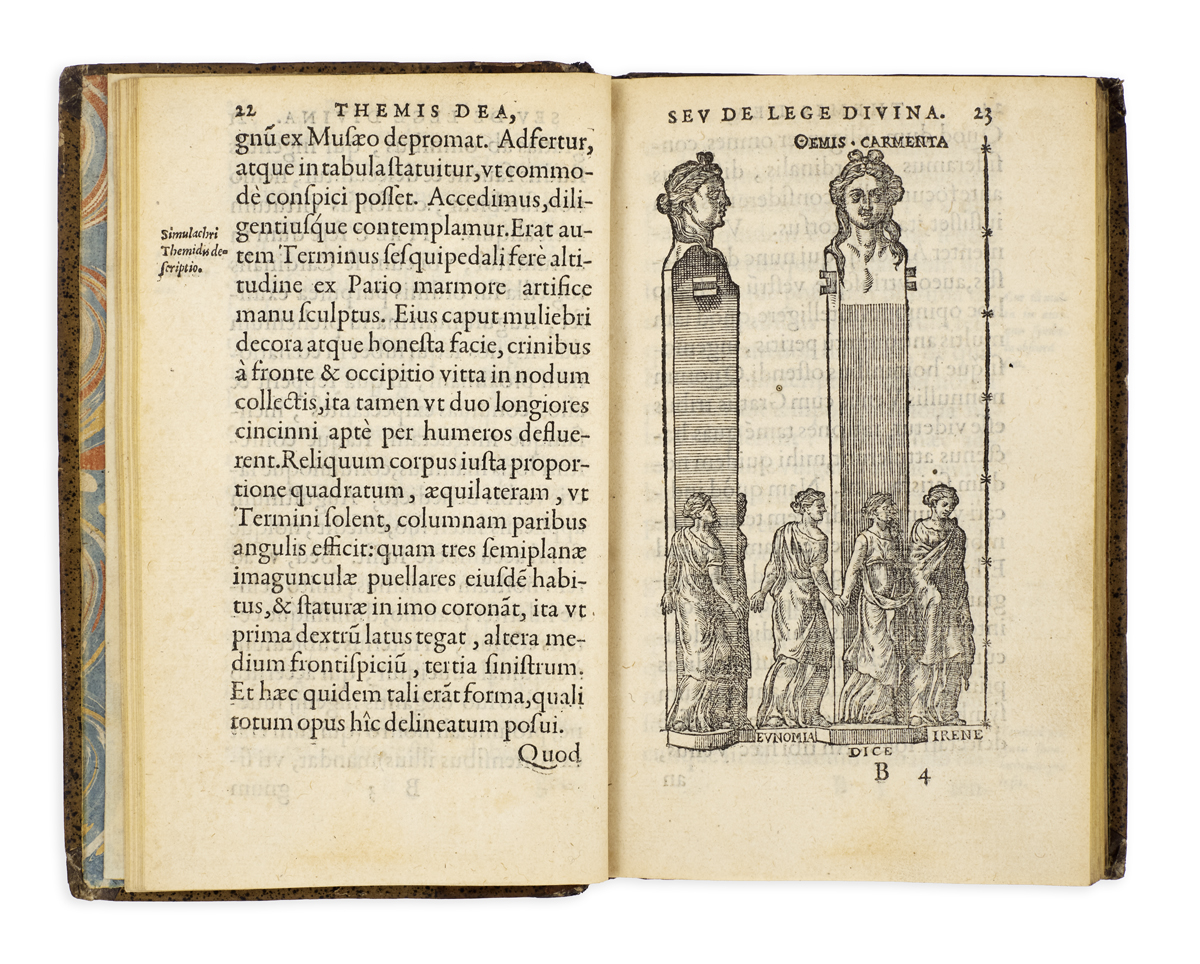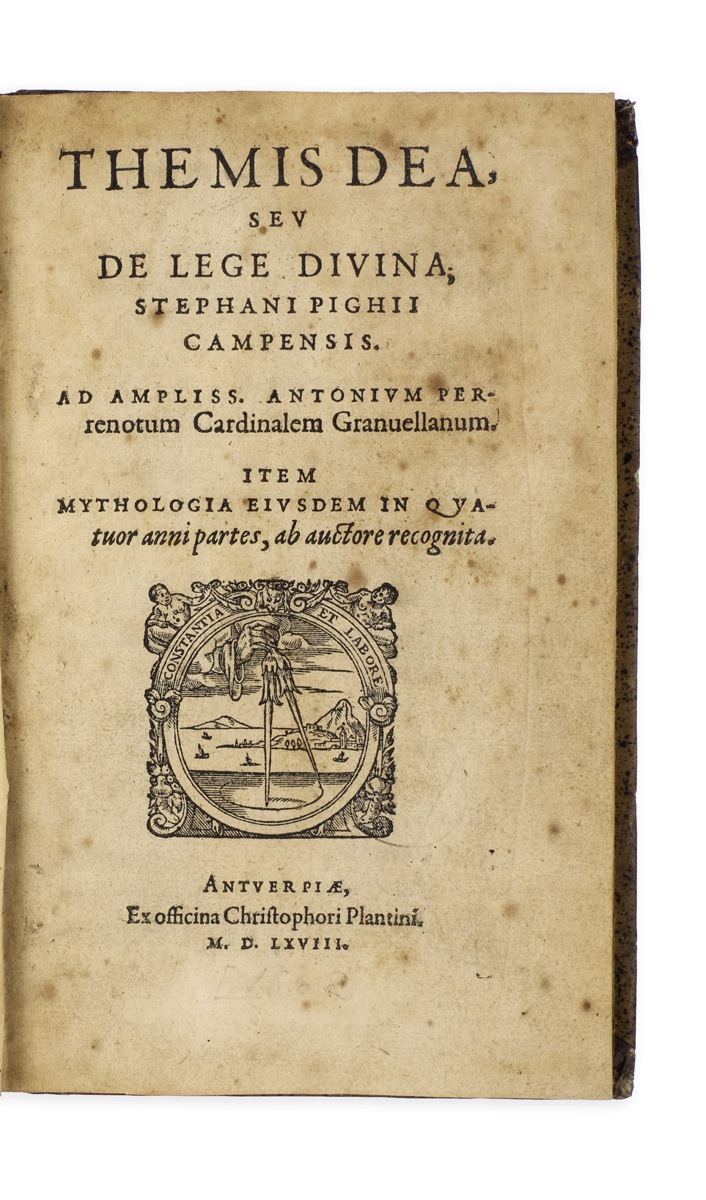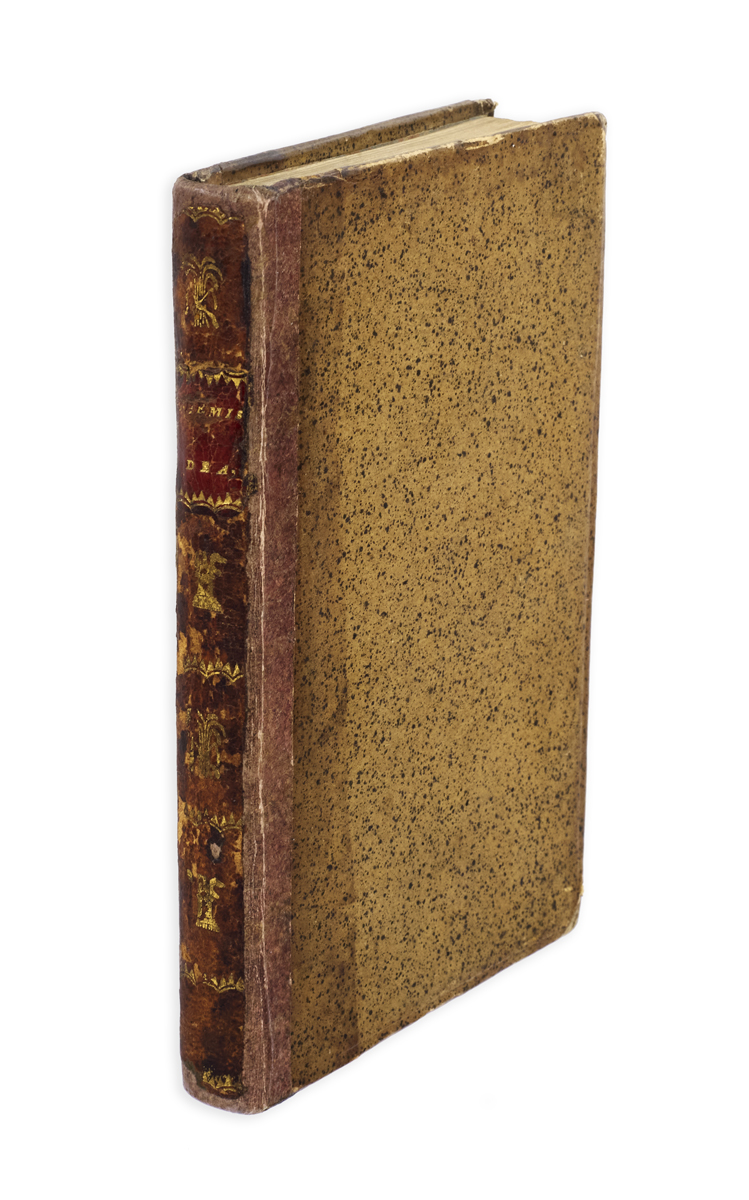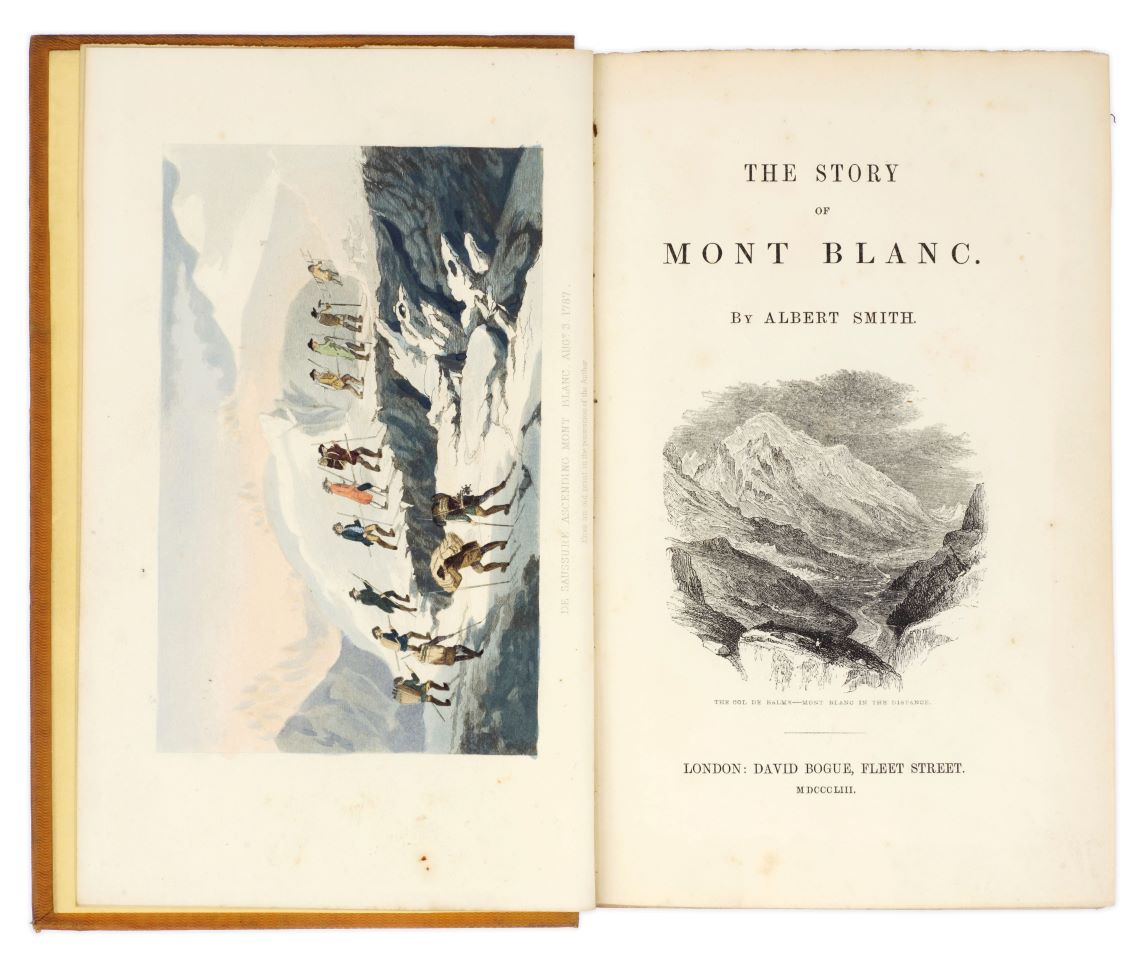


PIGHIUS, Stephanus Vinandus.
Themis dea, seu de lege divina … Mythologia … in quatuor anni partes, ab auctore recognita.
Antwerp, Christopher Plantin, 1568.
8vo, pp. 207, [13]; woodcut Plantin device to title, woodcut initials, with full-page woodcut illustration to p. 23, without the folding plate (see below); some foxing to first and final leaves, but a very good copy; bound in late eighteenth-century calf-backed boards with speckled sides and vellum tips, spine gilt in compartments with gilt red morocco lettering-piece, marbled endpapers; rebacked with spinepiece relaid.

Added to your basket:
Themis dea, seu de lege divina … Mythologia … in quatuor anni partes, ab auctore recognita.
First and only edition, scarce, of Pighius’s two treatises on Roman archaeology, one of the founding texts of scientific research into myths.
Stephanus Vinandus Pighius (or Steven Winand Pigge, 1520–1604) was a humanist philologist and antiquarian from Kampen in the Netherlands. Following his studies in Leuven, he moved to Rome, where he became the secretary to Cardinal Marcello Cervini, later Pope Marcellus II. In 1555, he was in Brussels where he became the librarian to Antoine Perrenot de Granvelle (1517–1586), later cardinal and the dedicatee of the present work. The first treatise, Themis dea, contains a description of a marble herma acquired by the cardinal and humanist Rodolfo Pio da Carpi (1500–1564), which is identified as Themis, the Greek goddess and personification of justice and divine order, and a discussion of the problem of Themis and Roman mythology. The second, Mythologia, contains a description of a silver Roman vase with relief, found in Arras and acquired by Cardinal Granvelle (the second treatise was illustrated with the missing folding plate). The book ends with a letter to Pighius by Nicolaus Florentius (Rome, 4 December 1567) regarding the Themis problem and Pighius’s reply.
The two woodcut illustrations were designed by Pieter van der Borcht and cut by Antoon van Leest. The costs of the illustration – a total of 2 gulden and 15 stuyvers to van der Borcht and 10 gulden to van Leest – appear to have been charged to the author, and delays with the woodcuts held up publication of the book. At least some copies, however, were issued in advance, before the second woodblock was ready: Voet notes one sent by Plantin to de Çayas on 24 December 1567 and twelve copies to Pighius on 12 January 1568, which are recorded as lacking the folding plate.
Adams P-1199; Voet 2053.

